Random Brain Cells Firing on “No one buys books anymore”
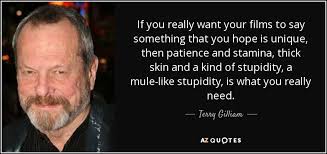
This is the title of an article making the rounds in the writing world based on Elle Griffin taking a dive into the results of a book about the testimony of industry insiders on the Random House-Simon Schuster merger. It’s an article well worth reading and well written.
I’m seeing a lot of chatter about it, much of it negative about publishing. Also, a bit of despair from a number of writers.
So the few brain cells I have left started nudging each other and here are a few random takes from my 34 years of making a living as a novelist. I am traditionally published, indie published, hybrid and also published by an Amazon imprint, which means I’ve seen the gamut. I’ve hit bestseller lists in multiple genres and also received quite a few “no thanks” on the option for my next book which in publishing means I’ve been fired a number of times as an author. Which, in the long run, turned out to be quite lucrative.
- Nothing new. Really. I’ve heard the same stuff forever. A handful of big names make most of the money. I remember early in my career an author taking Stephen King’s last advance and dividing it into how many other authors it could sustain and it missed the point entirely. King does support many other authors. He makes the money that allows his publishing house to take chances on new authors.
- There is no magic formula. Yes, they are throwing tens of thousands of books against the wall, hoping a couple stick. It’s the entertainment business. That’s an oxymoron. Entertainment is emotion. Business is logical (supposedly). No one really knows what makes something go viral.
- Traditional publishing is not filled with fools who don’t know what they’re doing and the system needs to be revamped. I’ve worked with mostly brilliant people who love books in the trad world. They are running it the best way possible given the previous point. Having run my own small indie imprint for several years, I’m amazed they make any money at all. They all work very, very hard. That said, they are getting squeezed tighter. Mostly for time. It takes much, much longer now for agents and editors to look at material. I’ve always described publishing as slow and technophobic. They are even slower now. While the world is moving faster.
- How many books sell how many copies, yada, yada isn’t really as telling as you think it is. Copies isn’t money. Money is money. There’s a good and bad side to this. The good side? There are always subrights. Foreign rights. Audio rights. Every author needs multiple income streams. The bad side? Many struggling authors drool over a $100,000 advance. But here’s the reality of that: take 15% off the top for the agent. Take off taxes. Divide by how long it takes you to write the book. Add in the uncertainty of whether you will get another contract.
- As far as technophobic, trad publishing was slow to take up eBooks. In fact, they viewed eBooks as a threat. I rode the golden wave of the indie movement and that was sweet. When indie authors owned kindle and Bookbub ran one of my ads every month.
- I submit that what isn’t being talked about is how a very important revenue stream for trad publishers is now eBooks. How the worm turns. Especially given the high prices on something that has minimal overhead. Over $10 for an eBook? Really?
- Which leads me to the great secret: the #100 bestseller in Romance in Kindle right now is #169 overall on Amazon Kindle. And over 90 of those romance titles are indie. Priced at $5.99 and below, usually below $4.99. And, in Kindle Unlimited (KU), the Netflix of publishing which trad publishers fear.
- Which leads me to the big lie: eBooks sales are going down. I’ve heard that for the past ten years. If it were true, there would be no eBooks left. The only entity that knows the true number of eBook sales is Amazon and they aren’t telling. No one is counting my indie sales. And all those other millions and millions of pages read in KU. I submit eBook sales are always going up. KU pages read constantly expanding shows that.
- The problem for trad publishers, and somewhat for indies, is we get paid a LOT less for KU than a book sale. A $4.99, 100,000 word/400 pages novel gets around $3.49 per sale for the author. If the entire book is read in KU, it pays the author $1.66. Less than half. However, at least for romance, the voracious readers and movement up the bestseller list due to volume more than makes up for it. When Jennifer Crusie and I went into KU recently with our Liz Danger series, our sales increased 20 times.
- Notice I said above that not getting my option renewed on contracts turned out to be lucrative? Because I got the rights back and republished a number of my titles as indie. My Area 51 series sold over a million copies at Random House, but through persistence (read, being obnoxious) I managed to snag the rights back. That original series, supplemented with new titles, now generates nice monthly income. The lesson: nothing is all good or all bad in publishing. A rejection is an opportunity to do it differently.
My recommendations?
- Read the stats, shrug, then do your own thing. We’re all unique as authors. What works for one author isn’t going to work for you. You are not a statistic.
- Content is king. There is way too much emphasis on marketing rather than content among authors. Sometimes gimmicks work, but they’re not sustainable. What is sustainable is good content over time.
- Have multiple sources of income. If you are a midlist trad author you have to be working on getting some indie titles out there and becoming hybrid. Indie titles generate income forever. Trad titles, as the article notes, rarely earn out their advance. Once you cash that last advance check, that’s it.
- A number of military schools I went to, such as West Point or Special Forces Qualification, would start with an instructor telling us “look to the left, look to the right, one of you won’t be here in X number of weeks”. And my thought was always, well tough look to those guys. It never occurred to me that would be me. You need, as Terry Gilliam, says, “mule-like stupidity” to succeed in the arts world. A belief in yourself that defies reality.
Shelter from the Storm Publishes Today

Shelter from the Storm, the 6th book in the Green Beret series (Will Kane) is out today.
Set in late 1978, Will Kane becomes embroiled with terrorist who have kidnapped his ex-wife in a remote town in the San Juan Mountains of Colorado. Die Hard with snow. And at the end, he is back in New York City as we ring in 1979 and more adventures in the Big Apple for the new year.
In celebration, New York City Little Black Book is free today through the 28th. Atlantis, the first book in the series which Terry Brooks calls “Spellbinding” is also free.
Coming in June is Rocky Start, the first book in a new series with my collaborator, Jennifer Crusie. These are action romances that focus on community. We pitch this new series as the movie RED in a small town in the Smoky Mountains. A peaceful community of retired, very dangerous former operatives and a stranger comes to town. Nothing but good times ahead.
I hope everyone is welcoming Spring. I certainly am. I’ve made several more videos on various survival topics including one on a blood trauma kit, because I’m such a cheery fellow. There is also one on Special Forces Survival Hacks. They are on my Youtube channel.
Nothing but good times ahead!
Bob
Movie Review: Will. There Isn’t Always A Happily Ever After
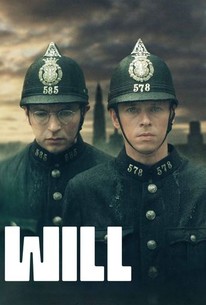
We love heroes. We love bravery. Reality? Not so much.
Will is a movie set in Antwerp in 1942. It’s in Flemish, so subtitles are a must, although for a brief while I watched in the dubbed English and will say it’s the best dubbing job I’ve seen (I usually hate it and prefer the original language with subtitles). Wil is the protagonist, a young man starting his first day as a police officer in the city.
There is a slight problem and that is that the city is occupied by the Germans who actually rule.
The story starts fast, with the young rookies getting a briefing by their watch commander who makes them sing a childhood song that essentially says “Watch, but do nothing.”
It’s good advice because right away Will and his partner Matteo got corralled by a lone German to shake down some Jews and eventually take the couple and their young daughter in. On the way, bad things happen and things spiral out of control for the rest of the movie.
Stark choices are faced: loyalty or saving yourself and your family? In most fiction, the hero rises to the occasion and manages to save themselves and others.
Reality? You have to watch the movie. There are indeed moments of bravery. Of decency.
I’m torn about recommending this movie. I think it should be watched as our country spirals into hatred and bigotry and violence. Many people are being tested as to their values and frankly, most are failing. They are afraid of the mob. I’ve noted that when I even mention facts that some don’t believe in, I am viciously attacked, cursed at and called names. There is no reasoning. It is angry and hatred. I hope it doesn’t explode, but as we saw on 6 January several years ago, it can. Because there are those who profit from it and there are evil people in the world.
Why not watch it? It will trouble you. But I think that’s what some good stories do. They trouble you and make you think.
American Fiction: Smart, intriguing and excellent acting
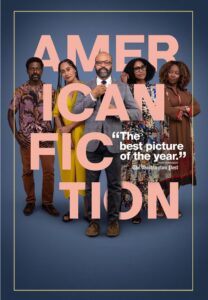
There’s actually a lot to unpack from this movie. At times it’s almost a farce on both race and the world of publishing. But it is also about family, which can always bring its share of pathos.
Having made my living writing fiction of almost 35 years, I found the writing and publishing part dead on, albeit a bit over the top. I do think many writers have a streak of self-destruction and anger as Monk, the protagonist, certainly exhibits. Publishing is part of the entertainment business and that certainly makes no sense since entertainment is emotional and business is supposed to be logical. Try being Kirk and Spock in one person and conduct business?
On a deeper level, the examination of race and family ties is really worth pondering. The montage of films for Black History Month was startling. The reactions of the white editor and publicist to a “Black” book was funny and sad.
As a writer one of the hardest types of characters to generate is the one who is self-unaware as Monk clearly is. His brother and others around him try to show him this, even though they have their own faults. The range of emotion goes from tragedy to happiness.
Without giving it away, the ending might be considered a cop-out, but it was undoubtedly a genius move.
Bottom line? Jeffrey Wright deserved the Oscar more than Cillian Murphy who mainly walked around brooding. Wright’s able to convey a lot with a little. In fact, it was a much better picture than Oppenheimer which I found to be quite a yawn if you knew the history.
Highly recommended.
Zone Of Interest: A Review. A Chilling and Powerful Movie
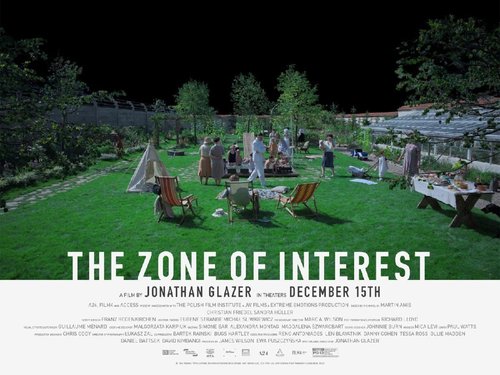
Simple is better. Less is more. Those are two fundamentals I try to stick to when writing. So when I read a book or watch a movie that excels at those mantras I am blown away.
Zone of Interest’s premise is simple and is the simple story of a family. That just happens to live in a house on the outside wall of Auschwitz. And the head of the family is the camp commandant. We never really see inside the camp. There is a constant hum in the air along with smoke rising. There are distant, and not-so-distant shots constantly echoing. The sounds of manufacturing machinery, the crematoria, furnaces, boots, period-accurate gunfire and human sounds of pain are a constant refrain. Yet this family goes on with their life. Fishing. Raising a beautiful garden. Admiring a mink coat that came from . . .
This movie is powerful in a sublime way. How the petty concerns of a family, whose head of household is responsible for so much death and misery, are simply laid out without commentary. The fact that his wife refuses to move after he gets reassigned because she loves her garden so much is stunning.
There are many little pieces in this movie that fit together to show the potential for our ability as humans to ignore pain and suffering so easily when it isn’t us. Even more so when it profits us.
Definitely recommend this movie.
What About Bob? Lavender’s Blue discounted to .99
“Would it kill you to go home and see your mother?” Well, it very well might in the first book of the Liz Danger series as she returns home to a small town in Ohio.
Get Lavender’s Blue HERE on your favorite eBook platform.
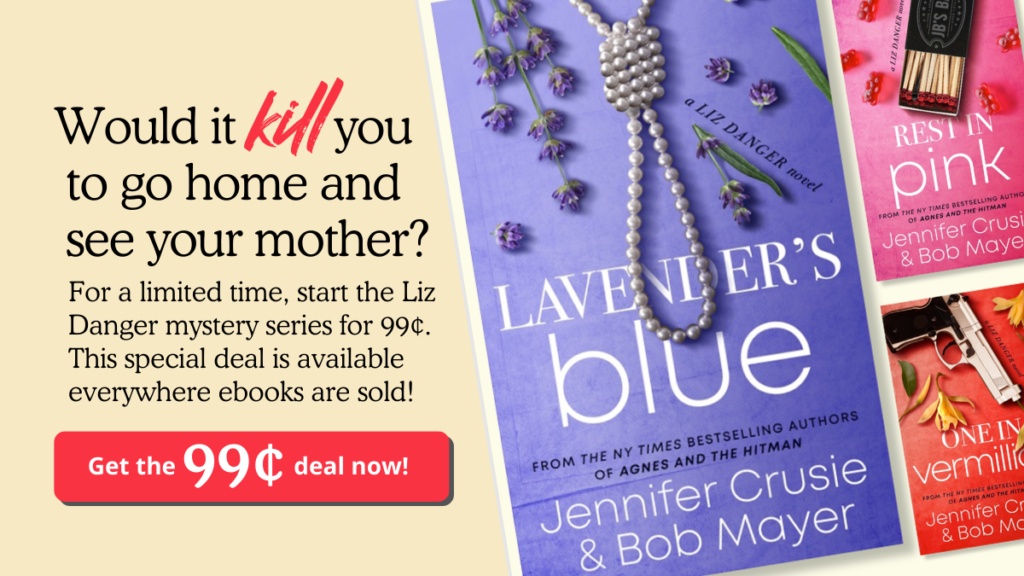
The first book in the bestselling Liz Danger series which came out six months ago is only .99 today as part of a Bookbub deal. It’s the first time the price has been cut so low. For those of you who like my thrillers or science fiction, you might want to try this book; the lead male character is a former Army Ranger who is not a cop. There is enough manly man stuff in there, along with a large dose of snark.
On other front, Shelter From the Storm, the next Will Kane book will be out in March. Area 51: Invasion, which can be read as a standalone, is free. If you ever wondered what would happen if the monsters from our collective subconscious such as Cthulhu, Naga, Kraken, Dragons and more return to invade our planet, this is the book for you.
And coming in June, a first book in a new series, Rocky Start. It’s about a small town in the Smoky Mountains where a bunch of former covert operatives have retired. Think the movie RED or Grosse Pointe Blank.
BTW, I’ve been posting more survival videos on my Youtube channel. Feel free to drop by and take a look and subscribe if you like what you see.
Nothing but good times ahead.
Bob
Would it kill you to go home and see your mother?
That is the question in Lavender’s Blue, the first book in the Liz Danger series and today’s Kindle Daily Deal.

As a benefit, Shane and the Hitwoman, is also discounted to .99 today.
Nothing but good times ahead!
Bob
What A Year That Was And A Year To Be
2023 was one for the record books, although which records are up for debate.
Personally, it was one of adjustment after going from never having had a serious health problem to chest pains/getting a stent put in so I don’t die in late 2022 at Thanksgiving. Which I give thanks for. So. All in all a good thing since I’m typing this. My advice—persistent chest pain, get it checked. I beat a widow maker by 10%. There are so many others who experienced worse so I am grateful.
Scout and I did a Gladiator wander to the Rockies to research my next Will Kane book, and followed the Rio Grande up into the San Juan mountains.
Professionally, I added a major thing, collaborating once more with Jennifer Crusie. We published three books, the Liz Danger series, each book a month apart and were gratified with the reader reception. We had gotten a traditional publishing offer for them but turned it down and are quite happy how they’re doing as indie titles. We did take a traditional audiobook offer and I was looking the other day and surprise, surprise, the preorder audiobooks are live on all three. That was incredibly fast work by Audible. The male/female combination of narrators they hired are great.
2024 will also be full of change because if we’re not changing, our brains are turning into cinder blocks. At least that’s what Sister Mary Ellen at Holy Rosary elementary told us many, many years ago.
Personally, Deb and I are going to move sometime this year finally, sooner rather than later. Where? Who knows? People think it’s neat to be able to live anywhere but then you have to like, make a decision. We’ve lived on an island off the east coast, one off the west coast, in the foothills of the Rocky Mountains, currently next to the Smokies and several other places. We’re more focused on the house itself than location.

Professionally, the next book in my Will Kane, Green Beret, series will be out in March. Shelter From The Storm. Jenny and I have finished the first book in our next series, Rocky Start, which will be out in June. We’re halfway through the second book, Very Nice Funerals, and plan on having the third, Honey Pot Plot, out in 2024. I’m debating what book to write on my own next, although Area 51 is begging for another one in the series. I’m also thinking about a survival fiction book but I don’t want to do the typical post-apocalyptic stuff because there is more to survival than just breathing. I’ll figure it out.
As usual, I’ve got some good deals to start the New Year off right. The Green Beret Area Study Workbook is free and I highly recommend it. This was a labor of love because I think it fills a critical need. As I noted, change is in the air and climate change, accidents, and various disasters will affect one out of three of you. Do you know what the threats are? The assets? Use the workbook and figure it out. It could save your life.
Also, Life’s Little Black Book, which is full of nuggets of advice is free. I need more reviews on it, but people tend to just read snippets and never get around to reviewing it. Synbat and The Writer’s Toolkit are both discounted.
Scout and Maggie are doing well, although I wouldn’t recommend having two girl dogs. They get into scraps with each other once in a while. They do have personality though. And are excellent guard dogs.
In sum, nothing but good times ahead!
Bob
Leave The World Behind, a review
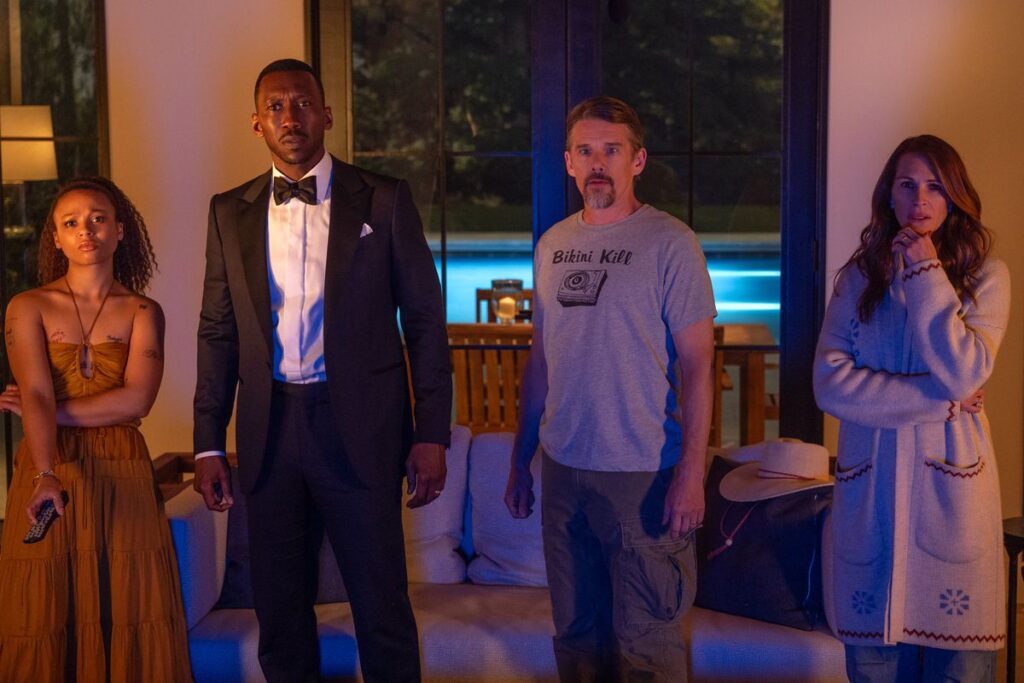
One of the best movies of the year. Okay, got that out of the way. And the reason for that is I read the NY Times review of it by Alissa Wilkinson before I watched it and it was rather negative. But my wife recommended it, and being a smart man, and a survivalist, I watched it. My wife is always right. Seriously.
Having made my living as a writer for over three decades, I understand how easy it is to poke holes in something if the initial reaction is negative. Which is what the reviewer did. Yes, the movie is very different than the book. In some ways, much better. The ending is certainly more uplifting. Bottom line—there’s a lot packed into every scene and not just the dialogue which can seem a bit didactic at times, but actually isn’t. There’s a lot of imagery in the background that sends a message. A lot. From the name of every place to the labels on the food stacked on the shelves in the survival bunker.
This is not a movie about how to survive the end of the world. It’s about the way people interact.
I’ve written a preparation and survival guide and am a former Green Beret. I know about prepping and survival and I will say this movie touched on the most fundamental aspects of it: the mindset. The ability to face things you don’t want to. To change when needed.
It also touched on what is a very possible way things fall apart: they fall apart.
Given the Obamas were executive producers on this movie adds an extra oomph to the part where Mahersala Ali talks about his rich client and the fact there is no secret cabal actually controlling things—that no one controls things. It mirrors the line from John Le Carre where he says the stunning thing in the covert world is to realize there is no inner room. We live in a precarious civilization made of cards and no one is running it. We’re all running it. I remember one time talking to a guy in another special operations unit and we both were wondering who was in the black helicopters doing all the high speed stuff, then we realized we were the ones in the black helicopters doing the high speed stuff, and if we were it, that’s kind of scary.
And our world as we know it is quite susceptible to falling apart. Here in the United States we are well on our way to falling apart. The most dangerous thing going on are those who willfully spread flat out lies, usually for their own enrichment. We have people who are anti-everything. Anti-mask, anti-vaccine, anti-science, anti-EV, anti-empathy, anti-government, the list goes on. Anger, hate and envy rule. And when that gets strong enough, things will fall apart. People like that don’t build. They destroy.
But, back to the movie. Logically there are fallacies if you stop and think about it. But the thing is, it plays out from the perspective of the people caught up in an event they don’t understand. The lack of information is one of the most debilitating things for modern people. When Ethan Hawke’s character essentially prostrates himself in front of Kevin Bacon telling him that without his cell phone and GPS he is a worthless man, it seems extreme. But there’s a lot of truth to it, but more importantly, it is the only way his character can get through to Kevin Bacon’s character and elicit the slightest bit of empathy and gets what he needs for his son. (BTW, yes, I have a whole section in my book on map reading and why you need paper maps and even a Youtube video about it—along with pretty much everything else covered in the film—and yes, you are probably woefully unprepared for even the most basic disaster).
Frankly, the most unrealistic part of the movie is the core: that a character like Julia Roberts, who opens the movie talking about how much she hates people, admits she hates herself for being like that. And she changes for the better. It is an uplifting message. I wish it were true.
Cover Reveal for Rocky Start

After quite a few proposals and a lot of modifications, we finally have a cover for the first book in our new Jennifer Crusie/Bob Mayer series, Rocky Start. Or as I like to to call it, the new Bob Mayer/Jennifer Crusie series Start Rocky.
While we got finals of the Liz Danger covers relatively quickly, this one took a while. A big issue is that while we list the book primarily in “romantic suspense” it isn’t a neat fit. More like putting a square peg in a round hole or something like that. Yes there is romance, yes there is suspense but in a way it’s a bit more than that. Our books examine male-female perspectives which, surprisingly are not the same. That’s because I do the male POV character in first person and Jenny does the female in first person. And we’re both kind of bonkers.
We write entirely via email, using a program called Spike to keep track of the back and forth. And there’s a lot of back and forth. When we wrote the Liz Danger series, we ended up with well over 600,000 words in Spike. And that’s just back and forth, not the over 300,000 words that ended up in the three books. So roughly a million words exchanged. Occasionally brilliantly. Often not.
What makes the collaboration work is we each bring different things. I am more a big picture, plot writer and Jenny is more a detail, character-focused writer. While Jenny is known in romance circles my readers have no idea what to expect next from me. I’ve hit bestseller lists in romance with Jenny, science fiction, thriller, historical fiction, and even nonfiction. My mind wanders.
We liken the books in the Rocky Start series to the movies RED or Grosse Pointe Blank.
As far as the cover we started out with more a traditional cover. But we aren’t traditional. It was also suggested not having a gun on the cover as that turns off some romance readers, which I understand, but that ship sailed with the previous series. The gun is representative of my character, Max, a former covert operative while the Rose represents, well, Rose, the heroine.
We are awaiting a cover for the second book in the series, Very Nice Funerals. I suggested a coffin with a flower in it. I do no think my suggestion is being taken. We shall see.
Nothing but good times ahead.

Recent Comments